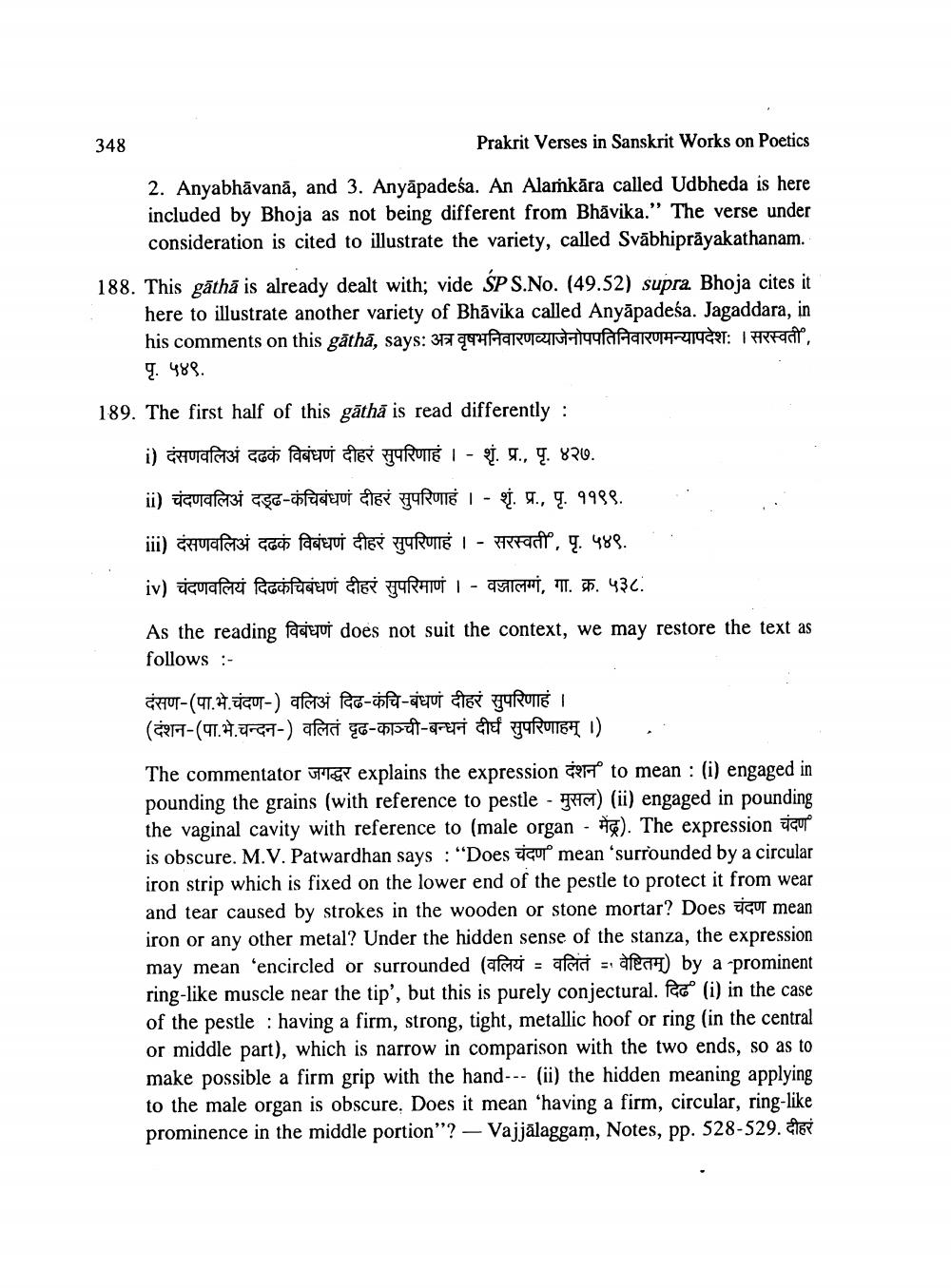________________
348
Prakrit Verses in Sanskrit Works on Poetics
2. Anyabhāvanā, and 3. Anyāpadeśa. An Alaskāra called Udbheda is here included by Bhoja as not being different from Bhavika." The verse under consideration is cited to illustrate the variety, called Svābhiprāyakathanam.
188. This gāthā is already dealt with; vide SP S.No. (49.52) supra Bhoja cites it
here to illustrate another variety of Bhāvika called Anyāpadeśa. Jagaddara, in his comments on this gāthā, says: 37 Haru f faru RM9T: raat, q. 488.
189. The first half of this gāthā is read differently :
i) cufth coc faeui 163 PYRUITÉ
- 91. 9., 9. 870.
ii) curfti aço-fediyu sei
RUTE I - Q1, 9., q. 9988.
iii) caucafersi cocho fadegut ctet URUTË I - praeit", q. 488.
iv) Agua
Rocagui 6 HURHUI - SIC", IT. 5. 436.
As the reading faqiyut does not suit the context, we may restore the text as follows:
CHUT-(97. H. JGUT-) afA3i Pac-cfa-ajelui de YRITÉ (TT-917.4977-) afod 6-hot-feti a HR116H 1)
.
The commentator MG explains the expression to mean : (i) engaged in pounding the grains (with reference to pestle - P ) (ii) engaged in pounding the vaginal cavity with reference to (male organ - #6). The expression digu is obscure. M.V. Patwardhan says: "Does TİGUT mean 'surrounded by a circular iron strip which is fixed on the lower end of the pestle to protect it from wear and tear caused by strokes in the wooden or stone mortar? Does digut mean iron or any other metal? Under the hidden sense of the stanza, the expression
may mean 'encircled or surrounded (वलियं = वलितं = वेष्टितम्) by a prominent ring-like muscle near the tip', but this is purely conjectural. Fac (i) in the case of the pestle : having a firm, strong, tight, metallic hoof or ring (in the central or middle part), which is narrow in comparison with the two ends, so as to make possible a firm grip with the hand--- (ii) the hidden meaning applying to the male organ is obscure. Does it mean “having a firm, circular, ring-like prominence in the middle portion"? — Vajjālaggam, Notes, pp. 528-529. cler




